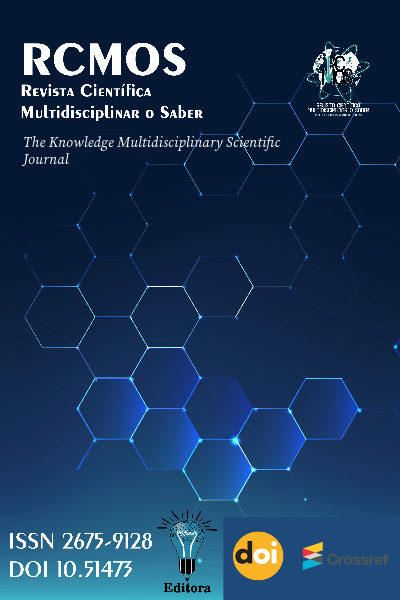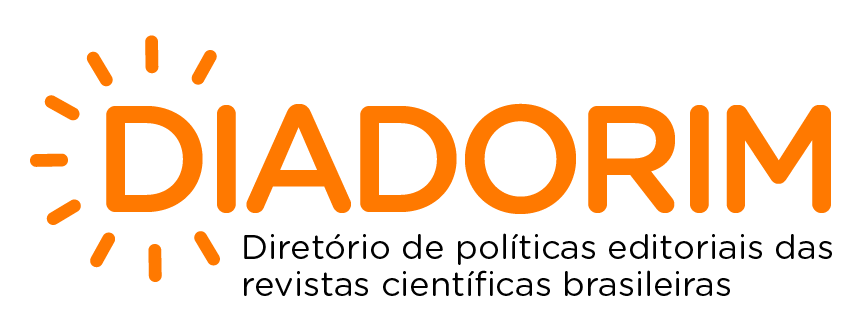Understanding mathematical language in classroom activities as a resource to enhance learning based on the theory of semiotic representation.
Understanding mathematical language in classroom activities as a resource to enhance learning based on the theory of semiotic representation.
DOI:
https://doi.org/10.51473/rcmos.v1i1.2024.578Keywords:
Keywords: Language. Mathematics. Elementary School.Abstract
This article brings to light the discussion about the difficulty in understanding mathematical language by elementary school students, as a learning resource for success in activities and for the appropriation of knowledge based on the concept of semiotic review presented by Raymond Duval. The research aims to investigate the importance of understanding mathematical language in classroom activities, as a resource to improve learning based on the theory of semiotic representation. One of the major problems highlighted in elementary education concerns the difficulties in learning Mathematics, many of them due to a lack of assimilation on the part of students of the formulas and symbols that make up their language, considering the semiotic system, the register of representation, as an important factor in meeting the functions related to cognition from the representation and conversion of this language. In this sense, the investigation contributes to discussions related to the difficulties presented by students in relation to understanding mathematical language and success in carrying out activities corresponding to the content proposed by the curriculum syllabus for elementary education. This is a literature review using an exploratory descriptive methodology, with a qualitative approach related to the topic, based on research carried out on the main scientific research sites such as Google Scholar and SciElo. Mathematical language comprises a process of translation or conversion from natural language to a formalized language, specific to that discipline. This characteristic constitutes, in many cases, obstacles to the process of appropriating concepts necessary for learning.
Downloads
References
ALVES -MAZZOTTI, A. J. O método nas ciências sociais. In: ALVES -MAZZOTTI. São Paulo: Pioneira Thomson Learning, 2002. p. 109-187.
BRASIL. Ministério da Educação e do Desporto. Parâmetros curriculares nacionais: terceiro e quarto ciclo (Matemática).Brasília: MEC/Secretaria de Educação Fundamental, 1998.
CÂNDIDO, Patrícia Teresinha. Comunicação em Matemática. In:______.SMOLE; DINIZ, Kátia Stocco Smole e Maria Ignez Diniz, (Org). Ler, escrever e resolver problemas: Habilidades básicas para aprender Matemática. Porto Alegre: Artmed Ed. 2001 - p 15-28.
DUVAL, R. Registros de representação semiótica e funcionamento cognitivo da compreensão em matemática. In: MACHADO, S. D. A. (org.). Aprendizagem em matemática: Registros de representação semiótica. Campinas, SP: Papirus, 2003. (Coleção Papirus Educação
DUVAL, R. Registros de Representação Semiótica e Funcionamento Cognitivo do pensamento. Revemat, Florianópolis, v. 07, n. 2, p.266-297, 2012. DOI: https://doi.org/10.5007/1981-1322.2012v7n2p266
DUVAL, Raymond. Semiósis e Pensamento Humano: Registros semióticos e aprendizagens intelectuais. (fascículo I). Tradução de Lenio Fernandes Levy e Marisa Rosâni Abreu da Silveira. São Paulo: Editora Livraria da Física, 2009.
FIDALGO ANTÓNIO; GRADIM ANABELA. Manual de Semiótica UBI –PORTUGAL. www.ubi.pt.2004/2005
GIL, Antonio Carlos. Como elaborar projetos de pesquisa. 4ª Ed. São Paulo: Atlas,2010
GRANELL, Carmem Gomez. A aquisição da linguagem matemática: símbolo e significado. In: TEBEROSKY, A; TOLCHINSKY, L. (Org.). Além da alfabetização: a aprendizagem fonológica, ortográfica, textual e matemática. São Paulo: Ática, 2003 (p. 257-282)
LORENSATTI Sergio. Para aprender matemática. 3ª Edição. Campinas-SP: Autores Associados, 2009.
LORENSATTI, Edi Jussara Candido. Linguagem matemática e Língua Portuguesa: diálogo necessário na resolução de problemas matemáticos. Conjectura, v. 14, n.2, p. 89-99, Caxias do Sul, 2009.
MACHADO, Nílson José. Matemática e Língua Materna: análise de uma impregnação mútua. 6ª Edição. São Paulo: Cortez, 2011
MACHADO, S. D. A. (Org.). Aprendizagem em matemática: registros de representação semiótica. Campinas, SP: Papirus, 2003.
MALTA, Iaci. Linguagem, leitura e matemática. In: CURY, Helena Noronha. Disciplinas matemáticas em cursos superiores: reflexões, relatos, propostas. Porto Alegre: Edpucrs, 2004.
MENEZES, Luís. Matemática, linguagem e comunicação. Revista Millenium, n. 20, p. 1-5, 2000.
MORETTI Méricles Thadeu; Thiel, Afrânio Austregésilo. O ensino de matemática hermético: um olhar crítico a partir dos registros de representação semiótica. Práxis Educativa (2): 379–396. ISSN 1809-4309. doi:10.5212/PraxEduc.v.7i2.0004 2012. DOI: https://doi.org/10.5212/PraxEduc.v.7i2.0004
MORETTI, M. T. O papel dos registros de representação na aprendizagem de matemática. Contrapontos, Itajaí, v.2, n. 6, p.344-362, set/dez. 2002
MOUSINHO, Renata. Aquisição e desenvolvimento da linguagem: dificuldades que podem surgir nesse percurso. Revista psicopedagogia, São Paulo, vol.25 no.78, 2008.
NORONHA, Daisy Pires; FERREIRA, Sueli Mara S. P. Revisões de literatura. In: CAMPELLO, Bernadete Santos; CONDÓN, Beatriz Valadares; KREMER, Jeannette Marguerite (org.) Fontes de informação para pesquisadores e profissionais. Belo Horizonte: UFMG, 2000.
SANTAELLA, L. A percepçăo Săo Paulo: Experimento, 1993.
SANTAELLA, L. Matrizes da linguagem e pensamento: sonora, visual, verbal. 3. ed. Săo Paulo: Iluminuras, 2009.
SANTAELLA, L. O que é semiótica Săo Paulo: Brasiliense, 1983.(Col. Primeiros Passos).
SILVA, A. C. Reflexão sobre a matemática e seu processo de ensino aprendizagem: implicações na (re)elaboração de concepções e práticas de professores. João Pessoa-PB: UFPB, 2009. Tese. Programa de Pós-graduação em Educação do Centro de Educação da Universidade Federal da Paraíba, João Pessoa, Paraíba, 2009.
SILVEIRA, Marisa Rosâni Abreu Da. Tradução de textos matemáticos para a linguagem natural em situações de ensino e aprendizagem. Educação. Matemática. Pesquisa, São Paulo, v.16, n.1, p. 47-73, 2014.
SIM-SIM, Inês; SILVA, Ana Cristina Conceição Da; NUNES, Clarice. Linguagem e comunicação no jardim-de-infância: textos de apoio para educadores de infância.– Lisboa: Ministério da Educação, 2008. Disponível em: http://biblioteca.esec.pt/cdi/ebooks/docs/Linguagem_comunicacao_jardim_infancia.PDF
SKORA, A; JUNIOR, G. S.; STADLER, R.C.L. A importância da linguagem para o sucesso na aprendizagem em matemática. In: ______. CONFERÊNCIA INTERAMERICANA DE EDUCAÇÃO MATEMÁTICA, XIII, 2011, Recife. Anais eletrônicos.: Disponível em: http://www.lematec.net.br/CDS/XIIICIAEM/ artigos/749.pdf.
VALENTIM, Maurílio Antônio. Um breve relato da construção da linguagem matemática ao longo da história. São Paulo: II Seminário de escritas e leituras em educação matemática, 2013. Disponível em: <http://www.eventos.ufla.br/iiiselem/index.php/anais-do- vento/iiselem?showall=&start=2 >.
Downloads
Additional Files
Published
Issue
Section
Categories
License
Copyright (c) 2024 Handus Silva Freitas, Celeste Mendes (Autor/in)

This work is licensed under a Creative Commons Attribution 4.0 International License.












